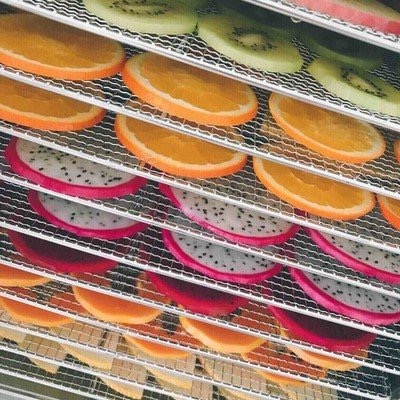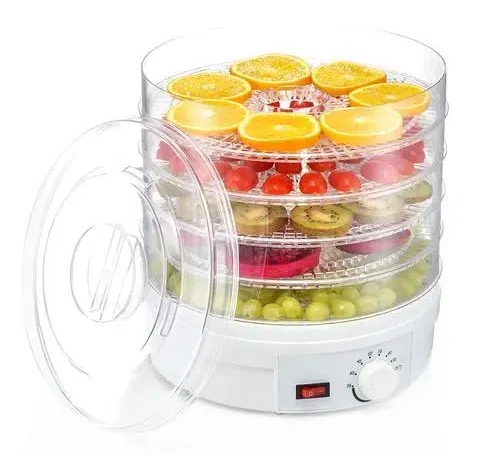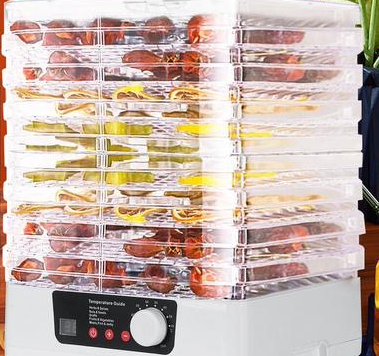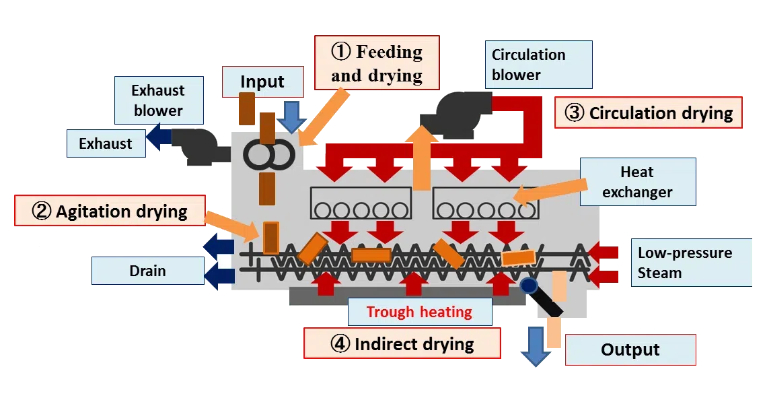
Content Menu
● Introduction
● What is a Food Dehydrator?
● How Does a Food Dehydrator Work?
● Benefits of Using a Food Dehydrator
● Additional Benefits
● Types of Food Dehydrators
>> 1. Stackable Tray Dehydrators
>> 2. Shelf Dehydrators
>> 3. Hybrid Dehydrators
>> 4. Commercial Dehydrators
● How to Choose the Right Food Dehydrator
● Comparing Food Dehydrators with Heat Pump Dryers
>> Energy Efficiency
>> Cost-Effectiveness
>> Versatility
● The Cheapest Heat Pump Dryer Options in Australia
● Tips for Using a Food Dehydrator
● Conclusion
● Frequently Asked Questions
>> 1. What is the best type of food to dehydrate?
>> 2. How long does it take to dehydrate food?
>> 3. Can I use my oven instead of a dehydrator?
>> 4. What is the lifespan of dried foods?
>> 5. Are heat pump dryers worth the investment?
Introduction
Food dehydrators have become increasingly popular as a method for preserving food, enhancing flavors, and creating healthy snacks. As a leading manufacturer of food dehydrators in China, we provide OEM services to international brands, wholesalers, and manufacturers. This article will delve into the various aspects of food dehydrators, their benefits, and how they compare to other drying methods. Additionally, we will explore the cheapest heat pump dryer options available in Australia, emphasizing their energy efficiency and cost-effectiveness.

What is a Food Dehydrator?
A food dehydrator is an appliance that removes moisture from food to inhibit the growth of bacteria, yeast, and mold. By lowering the water content in food, it helps preserve it for longer periods while retaining its nutritional value and flavor. Food dehydrators are versatile and can be used for fruits, vegetables, meats, herbs, and even flowers.
How Does a Food Dehydrator Work?
Food dehydrators work by circulating warm air around the food placed on trays. The heat evaporates moisture from the food while the fan ensures even airflow. This process typically takes several hours, depending on the type of food being dried. The temperature settings can often be adjusted to suit different types of foods; for instance, fruits may require lower temperatures compared to meats.
Benefits of Using a Food Dehydrator
1. Nutritional Retention: Unlike other preservation methods that may involve cooking or canning, dehydrating retains most of the nutrients in food.
2. Cost-Effective: Purchasing fruits and vegetables in bulk when they are in season and dehydrating them can save money.
3. Healthy Snacks: Dehydrated fruits and vegetables make for nutritious snacks without added preservatives or sugars.
4. Long Shelf Life: Properly dried foods can last for months or even years when stored correctly.
5. Versatility: Food dehydrators can be used for a wide range of foods, making them a valuable addition to any kitchen.
Additional Benefits
1. Convenience: With a food dehydrator at home, you can prepare healthy snacks at your convenience without relying on store-bought options that may contain additives.
2. Flavor Enhancement: Dehydrating concentrates flavors in fruits and vegetables, making them more delicious.
3. Eco-Friendly: By using a dehydrator, you can reduce food waste by preserving surplus produce instead of letting it spoil.

Types of Food Dehydrators
1. Stackable Tray Dehydrators
These dehydrators consist of multiple trays stacked on top of each other. They are generally more affordable but may require more time to dry food evenly.
2. Shelf Dehydrators
Shelf dehydrators have a more professional design with shelves that slide out. They often come with better temperature control and airflow systems.
3. Hybrid Dehydrators
Hybrid models combine features of both stackable and shelf dehydrators, offering versatility and efficiency.
4. Commercial Dehydrators
For larger operations or businesses that require high-capacity drying solutions, commercial dehydrators are available. These units are designed for continuous use and can handle large volumes of food at once.
How to Choose the Right Food Dehydrator
When selecting a food dehydrator, consider the following factors:
1. Capacity: Choose a model that fits your needs based on how much food you plan to dehydrate at once.
2. Temperature Control: Look for adjustable temperature settings for different types of food.
3. Airflow Design: Ensure the model has an efficient airflow system to promote even drying.
4. Ease of Cleaning: Removable trays and non-stick surfaces make cleaning easier.
5. Noise Level: Some models operate quietly while others may be noisy; consider your environment before making a choice.
Comparing Food Dehydrators with Heat Pump Dryers
While food dehydrators are specifically designed for preserving food, heat pump dryers serve a different purpose—drying clothes efficiently. However, both appliances share similarities in their drying processes.
Energy Efficiency
Heat pump dryers are known for their energy efficiency compared to traditional dryers. They use a closed-loop system that recycles hot air to dry clothes, significantly reducing energy consumption.
Cost-Effectiveness
Investing in a heat pump dryer may seem expensive initially; however, over time, users can save on electricity bills due to lower energy usage.
Versatility
While heat pump dryers are primarily used for laundry, they can also be utilized for drying certain foods if equipped with specific settings.
The Cheapest Heat Pump Dryer Options in Australia
For those looking for budget-friendly options in Australia, several models offer great value without compromising quality:
1. Hisense Series 5 - 8kg Heat Pump Dryer
Price: $999
Features: Energy-efficient with multiple drying programs.
2. Beko 8kg Sensor Controlled Heat Pump Dryer
Price: $899
Features: Smart technology that adjusts drying time based on moisture levels.
3. LG Series 5 8kg Heat Pump Dryer
Price: $999
Features: Inverter control for quiet operation and energy savings.
4. Westinghouse 8kg EasyCare Heat Pump Dryer
Price: $999
Features: User-friendly interface with efficient drying cycles.
5. Electrolux UltimateCare 500 Heat Pump Dryer
Price: $999
Features: Sensor dry technology for optimal results.
These models not only provide effective drying solutions but also help reduce energy costs over time due to their efficient operation.
Tips for Using a Food Dehydrator
To get the best results from your food dehydrator:
1. Prepare Your Food Properly: Wash and cut fruits and vegetables into uniform sizes to ensure even drying.
2. Use Proper Temperature Settings: Follow guidelines for different foods; higher temperatures may be needed for meats while lower temperatures work best for fruits.
3. Rotate Trays: If using a stackable model, rotate trays halfway through the drying process to promote even drying.
4. Store Dried Foods Correctly: Use airtight containers or vacuum-sealed bags to keep moisture out after drying.
5. Experiment with Flavors: Try marinating meats or coating fruits with spices before dehydration to create unique flavors.

Conclusion
Food dehydrators are an excellent investment for anyone looking to preserve food while maintaining its nutritional value. With various types available on the market, it's essential to choose one that fits your needs best. Additionally, understanding the benefits of heat pump dryers can help you make informed decisions about energy-efficient laundry solutions. Whether you're interested in preserving fruits or finding the cheapest heat pump dryer options in Australia, there are plenty of choices available that cater to your requirements.In summary, both food dehydrators and heat pump dryers offer practical solutions for everyday needs—preserving delicious snacks and efficiently managing laundry tasks respectively. By investing in these appliances, you can enhance your lifestyle while saving money in the long run.
Frequently Asked Questions
1. What is the best type of food to dehydrate?
Fruits like apples and bananas are popular choices due to their natural sugars and flavors. Vegetables like tomatoes and carrots also dehydrate well.
2. How long does it take to dehydrate food?
Dehydration times vary based on the type of food and thickness; generally, it takes anywhere from 4 to 12 hours.
3. Can I use my oven instead of a dehydrator?
Yes, you can use an oven set at low temperatures; however, it may not be as efficient as using a dedicated dehydrator.
4. What is the lifespan of dried foods?
When stored properly in airtight containers away from light and moisture, dried foods can last up to one year or more.
5. Are heat pump dryers worth the investment?
Yes, despite their higher initial cost, heat pump dryers save money on energy bills over time due to their efficiency.












